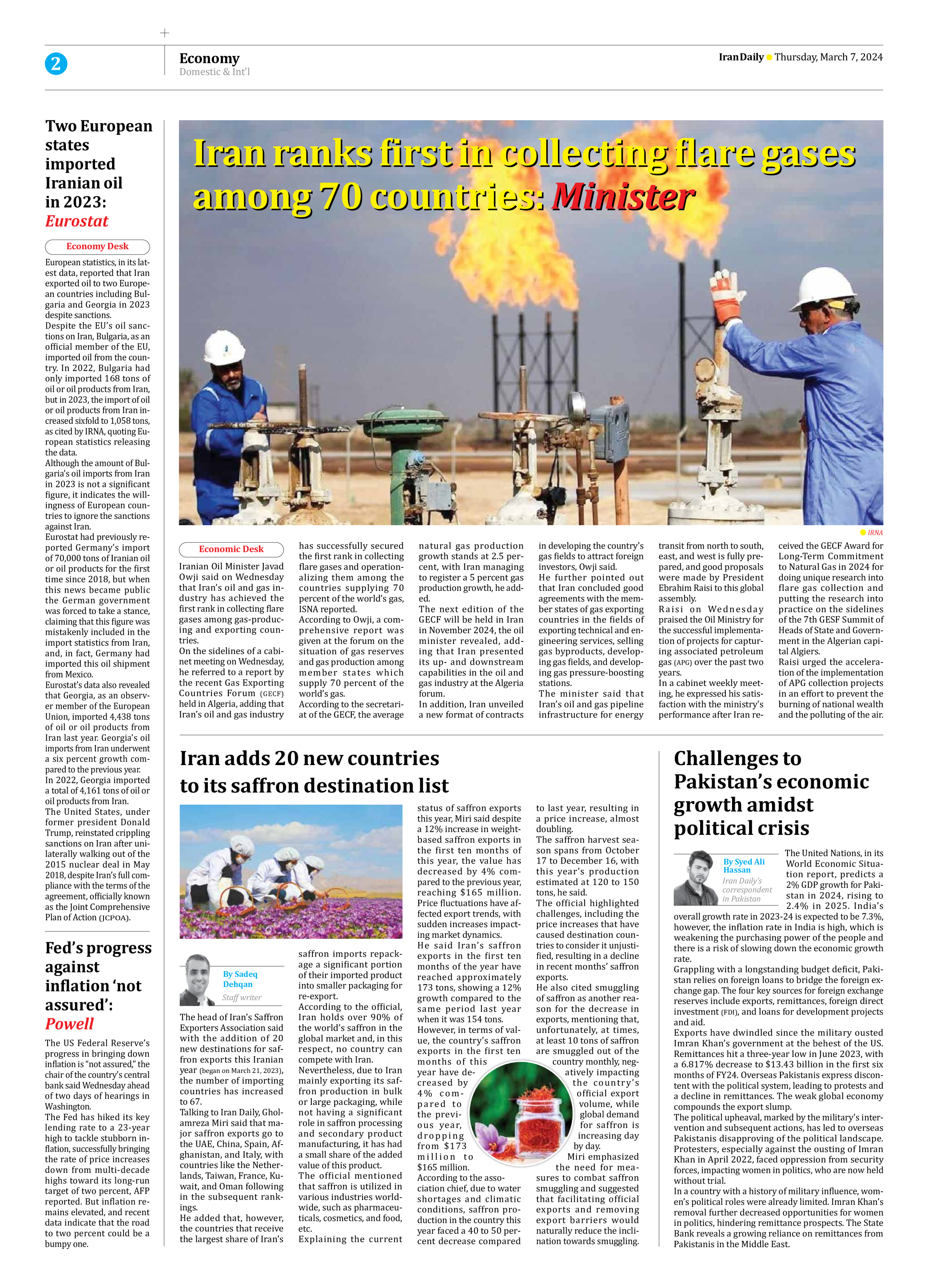
Iran adds 20 new countries to its saffron destination list
By Sadeq Dehqan
Staff writer
The head of Iran’s Saffron Exporters Association said with the addition of 20 new destinations for saffron exports this Iranian year (began on March 21, 2023), the number of importing countries has increased to 67.
Talking to Iran Daily, Gholamreza Miri said that major saffron exports go to the UAE, China, Spain, Afghanistan, and Italy, with countries like the Netherlands, Taiwan, France, Kuwait, and Oman following in the subsequent rankings.
He added that, however, the countries that receive the largest share of Iran’s saffron imports repackage a significant portion of their imported product into smaller packaging for re-export.
According to the official, Iran holds over 90% of the world’s saffron in the global market and, in this respect, no country can compete with Iran.
Nevertheless, due to Iran mainly exporting its saffron production in bulk or large packaging, while not having a significant role in saffron processing and secondary product manufacturing, it has had a small share of the added value of this product.
The official mentioned that saffron is utilized in various industries worldwide, such as pharmaceuticals, cosmetics, and food, etc.
Explaining the current status of saffron exports this year, Miri said despite a 12% increase in weight-based saffron exports in the first ten months of this year, the value has decreased by 4% compared to the previous year, reaching $165 million. Price fluctuations have affected export trends, with sudden increases impacting market dynamics.
He said Iran’s saffron exports in the first ten months of the year have reached approximately 173 tons, showing a 12% growth compared to the same period last year when it was 154 tons.
However, in terms of value, the country’s saffron exports in the first ten months of this year have decreased by 4% compared to the previous year, dropping from $173 million to $165 million.
According to the association chief, due to water shortages and climatic conditions, saffron production in the country this year faced a 40 to 50 percent decrease compared to last year, resulting in a price increase, almost doubling.
The saffron harvest season spans from October 17 to December 16, with this year’s production estimated at 120 to 150 tons, he said.
The official highlighted challenges, including the price increases that have caused destination countries to consider it unjustified, resulting in a decline in recent months’ saffron exports.
He also cited smuggling of saffron as another reason for the decrease in exports, mentioning that, unfortunately, at times, at least 10 tons of saffron are smuggled out of the country monthly, negatively impacting the country’s official export volume, while global demand for saffron is increasing day by day.
Miri emphasized the need for measures to combat saffron smuggling and suggested that facilitating official exports and removing export barriers would naturally reduce the inclination towards smuggling.







